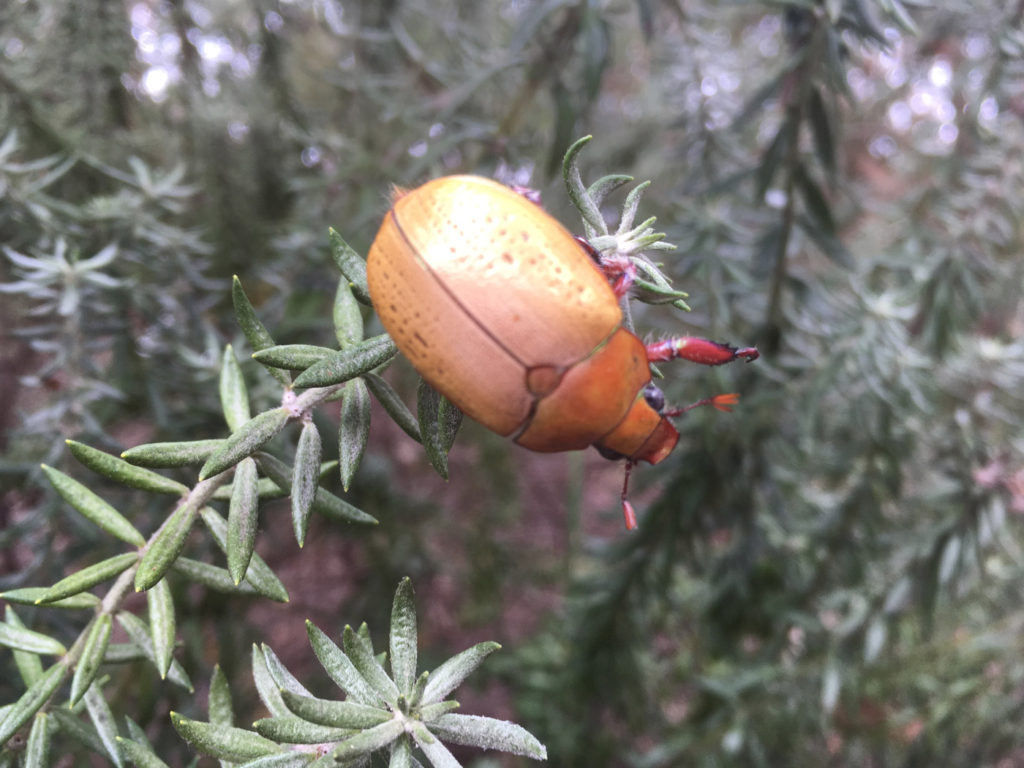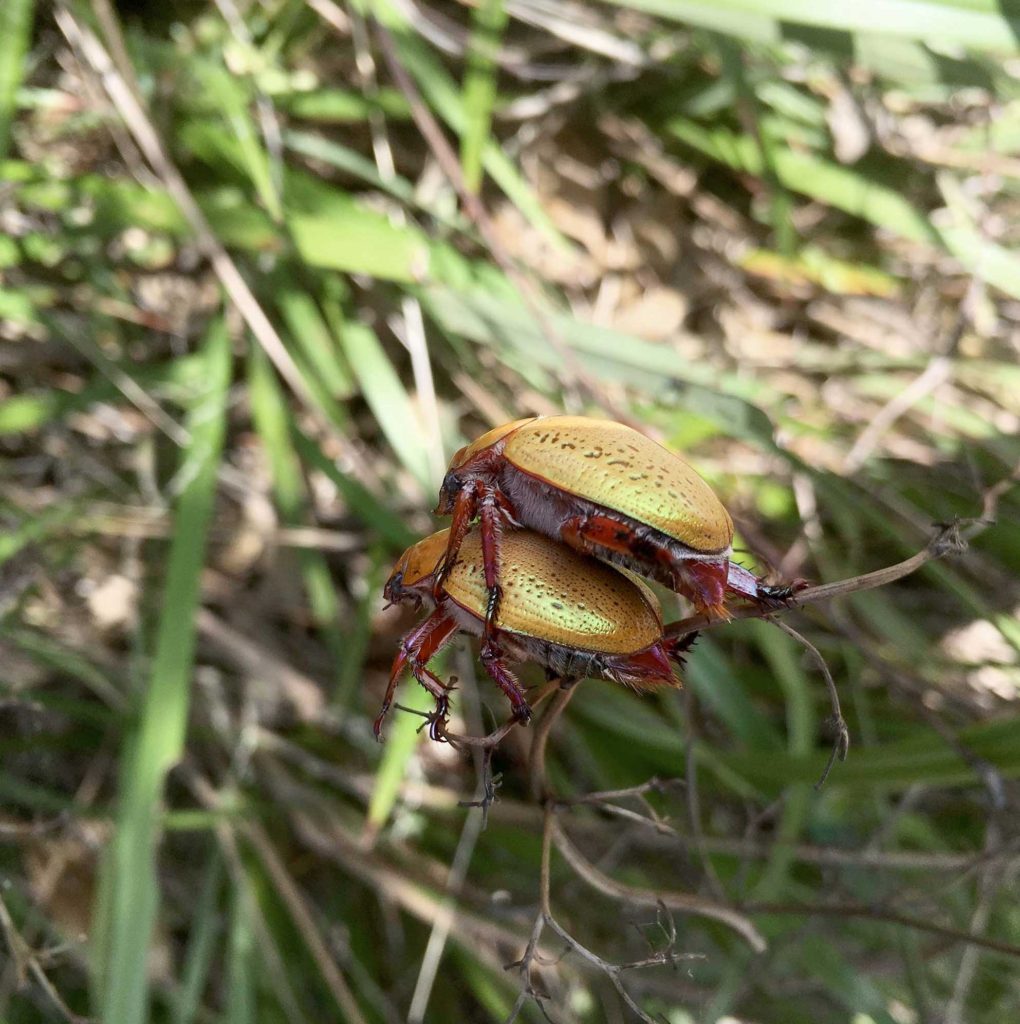

What would a traditional Sydney Festive season be without the company of Christmas Beetles (and truckloads of celebratory beer)? Observing the beautiful metallic sheen of this gentle creature is a joyful sign of summer. There are about 35 species of Christmas beetle in Oz and at least 10 types that occur in Sydney…so there is heaps of invertebrate yuletide variety. The further north you travel the more exquisite their colours can be.
Thoughtfully, The Australian Museum has created a (free) Christmas Beetle App, where you can check out many of the different kinds. Some have been given curious names such as “Washerwoman”, “Duck Billed”, “Furry Tailed Prince” and “Purple Reign”. (An Entomologist, somewhere, has obviously been on the wacky baccy!) Experts have even been known to examine the hairs on beetle bums to distinguish between similar varieties.
Our Christmassy friends are a type of Scarab beetle so they are pretty chunky with clubbed antennae and spiky legs. And they don’t bite… always an endearing trait.
Christmas beetles lay between 20 and 40 eggs that develop into larvae, becoming plump white crescent shaped grubs with russet brown heads and 3 pairs of legs (commonly known as Curl grubs). These grubs live in underground chambers for up to two years, scoffing plant roots and decaying matter – after which they will emerge (preferably after heavy Spring rain) in their glorious shimmering finery. They are then up for a party, just like the rest of us, which is why they seem unnaturally attracted to bright lights and can be found looking the bit worse for wear after a night of over indulgence (adult beetles love to eat eucalyptus leaves).
The problem is that Curl grubs have been singled out by the horticultural industry as “lawn wreckers”. They market a plethora of products designed to poison these grubs (never actually mentioning that if you pour that stuff on your lawn you are literally “killing Christmas”).
The other slight difficulty is that there are two other beetles (the introduced Argentine Lawn Beetle and the African Black Beetle) which have almost identical looking “Curl grub” larvae, making it almost impossible to identify which ones are the genuine pests. All of these grubs are natural food for Currawongs, Magpies and Possums which ensure that any damage to gardens is limited and seldom irreparable. And If you don’t use the proprietary “lawn products” you’ll have much healthier, aerated soils, full of microbial life.
Sadly Christmas Beetles seem to be becoming rarer every year. Reportedly, in the 1920’s, tree branches would hang into Sydney Harbour weighed down by huge masses of beetles. Poisoning their young, impacts their numbers but their favoured forested habitat is also disappearing. Only 10% of Cumberland Plain Woodland, for example, still exists. Their decline could also be due to drier than usual Spring weather. But who wants to hear about climate change when Santa is limbering up to take centre stage?
Associate Professor Tanya Latty (University of Sydney) is about to delve deep into our local Christmas Beetle population as part of the Manly Dam Biodiversity project. She may even discover a whole new species. All the fascinating goss will be on a brand-new website coming soon. You too can help provide a little bit of Christmas cheer to Christmas Beetles by not being too pernickety about your lawn, mulching your garden well and planting their favoured gum trees.
After indulging in a smorgasbord of eating and mating for a few weeks, Christmas Beetles will just disappear…they could almost be human!